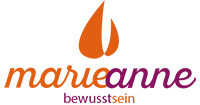What is local SEO? A complete local SEO guide for businesses
If you know your way around redirects, optimizing page speed, crawlability, security and structured data, make those your first priority. If not, let your site builder help you out or hire someone with a background in technical SEO. When that’s done, you can start looking at site structure and the content on your pages. In 1998, two graduate students at Stanford University, Larry Page and Sergey Brin, developed „Backrub“, a search engine that relied on a mathematical algorithm to rate the prominence of web pages. In effect, this means that some links are stronger than others, as a higher PageRank page is more likely to be reached by the random web surfer. The tool https://seo-anomaly-ranking.online/poland/seo-anomaly-pl-39/ lets you monitor your overall organic visibility, where 100% means a top ranking for all keywords and 0% means you rank outside the top 100 for all keywords.
The database search engines use to store and retrieve information gathered during the crawling process. HTML heading tags (H1-H6) separate content into sections, based on importance, with H1 being the most important and H6 being the least important. Headline tags should be used naturally and should incorporate your target keywords where relevant, as doing so may provide a small SEO benefit.
Find the best sources of your traffic
If your meta description exceeds the character limit, Google will truncate it with a “…”. Still, it can make your snippet look incomplete, and unfinished snippets https://seo-anomaly-incubator.online/germany/seo-anomaly-de-21/ are less attractive to users scanning the search engine result pages. Every page that matters — your homepage, product pages, blog posts, or landing pages — should have its own unique meta description. Reusing the same one across multiple URLs confuses search engine bots and weakens your ability to target specific search intent.
The ‘trick’ back then was making sure the keyword was being used enough times throughout your page and in your meta tags. Optimizing URLs and internal links is essential for improving your website’s crawlability and user experience. URLs should be descriptive, concise, and include your target keyword. Internal links, on the other hand, help search engine crawlers navigate your website and understand the hierarchy of your content.
Let’s start with some stats that https://seo-anomaly-vantage.online/poland/seo-anomaly-pl-33/ prove SEO is still a robust marketing channel. They’re constantly tweaking their rubrics for assessing content—not to mention the many outside influences. From semantic search to featured snippets to AI results, the space keeps evolving. Internal links help readers find additional useful information on your site, and outbound links to respected sources add context and build trust.
Complete List of WordPress Glossary Terms
When people search the web for the topics you write about, SEO-optimized content will appear higher in the search results. The meaning of off-page SEO or off-site SEO refers to all those strategies that allow you to improve https://seo-anomaly-visibility.online/poland/seo-anomaly-pl-11/ the ranking of a website without operating within the site, as we have seen for on-page SEO. One of the crucial steps in SERP generation is the analysis of page content. As we said, the goal is to provide results that match the search made by the user. Now that you know more about SEO, you can start using this method to help your business grow. They use these engines to answer questions, find products and services, and more.
- Local SEO goes beyond driving traffic—it directly boosts sales and strengthens your brand’s reputation.
- Enhance User Experience (UX) – SEO is not only about search engines but good SEO practices improve the user experience and usability of a website.
- Search engine marketing (SEM) promotes a business through unpaid or paid results on search engines, often both.
- Don’t be fooled by its placement at the end—this step is just as critical as any on-page tactic.
Search engines track every search users conduct (text and voice), every webpage visited, and every ad clicked on. Search engines may use this data to personalize the results for signed in users. A form of microdata which, once added to a webpage, creates an enhanced description (commonly known as a rich snippet), which appears in search results. This is calculated by dividing how much revenue you earned via organic search by the cost of the total investment, then multiplying by 100. The Robots Exclusion Protocol (or Standard) is a text file, accessible at the root of a website, that tells search engine crawlers which areas of a website should be ignored. The process of asking a search engine to return a website or webpage(s) to its search index after de-indexing.
If you don’t use SEO, you’re unlikely to rank prominently for relevant terms. This limits your ability to reach new prospects and persuade them to convert. However, organic results tend to have higher click-through rates because users often trust them more than ads. Organic results https://seo-anomaly-scenario.online/poland/seo-anomaly-pl-27/ can also generate sustained traffic at little to no ongoing cost. Paid results don’t always appear on search engine results pages (SERPs). When they do, they usually appear at the top with a „Sponsored“ or „Ad“ label.
